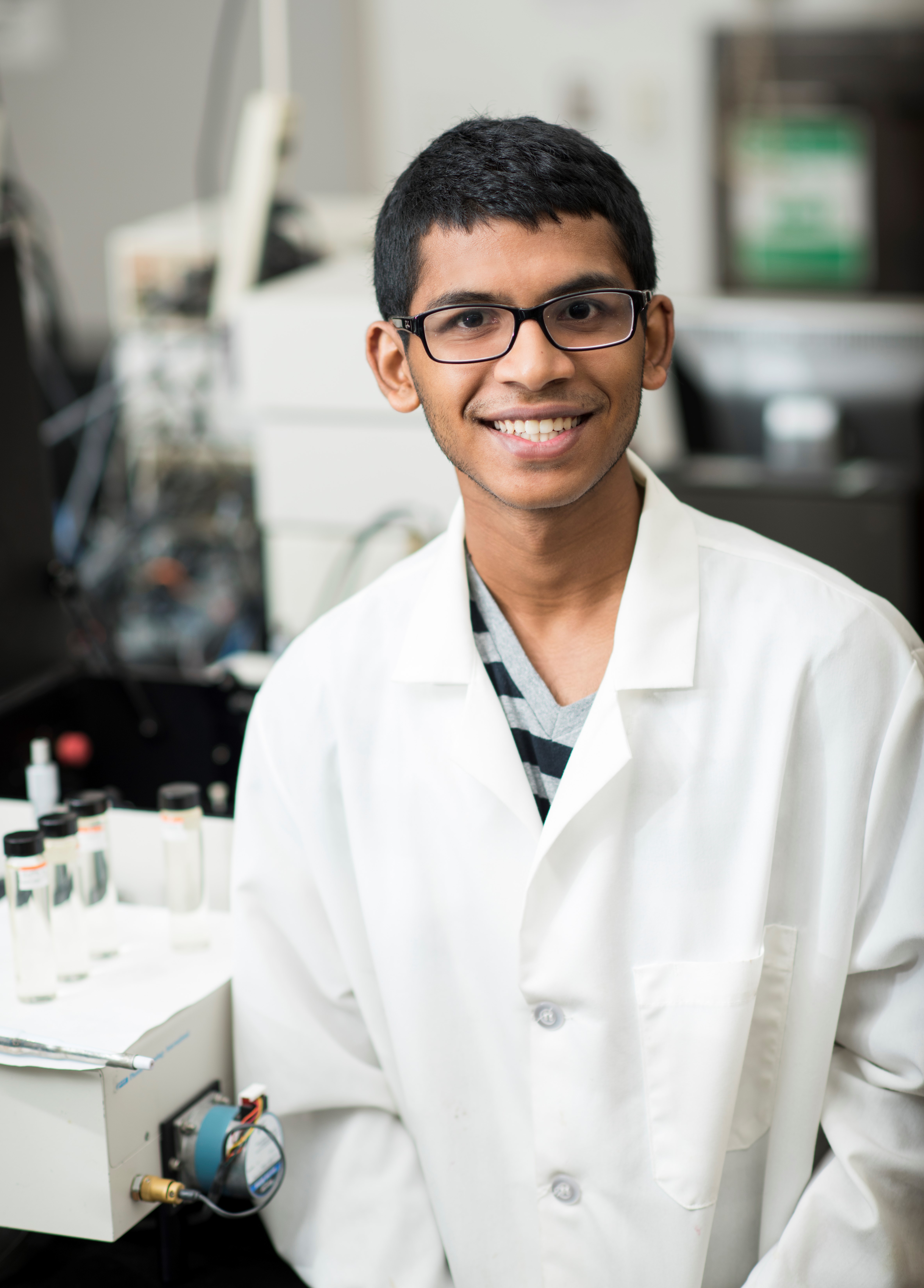
DENTON (UNT), Texas — Prateek Kalakuntla of Plano, a student at the University of North Texas’ Texas Academy of Mathematics and Science, has been named a regional finalist in the 2016 Siemens Competition in Math, Science and Technology. In addition, 15 other TAMS students were named semifinalists in this competition, with TAMS leading other Texas schools in the number of semifinalists and having the third largest number of semifinalists in the nation.
Established in 1999 by the Siemens Foundation, the Siemens Competition is one of the nation’s premier research competitions for high school-aged students, promoting excellence in math, science and technology by encouraging students to undertake individual or team research projects.
As a regional finalist, Kalakuntla receives a $1,000 scholarship and will compete with other regional finalists from Texas and nine other states for a spot in the national competition, which will be held Dec. 2-6 at the George Washington University in Washington, D.C.
For his Siemens project, Kalakuntla investigated the use of phosphorescent materials and methods for sensing and removing mercury and other toxic heavy metals from water. He combined gold with a ligand — a molecule that binds to a receptor — to synthesize a substance that usually has a green emission, but has a reduced emission in the presence of mercury.
He has been working on the research in the laboratory of Mohhamad Omary, UNT professor of chemistry and affiliated professor of physics, for almost a year.
“In the beginning, I was looking for sensors to identify molecules, but after the water crisis in Flint, Michigan, I wanted to find something that could sense lead or mercury. I also took a holistic view, because lead and mercury in drinking water is a problem in Third World countries,” Kalakuntla said. He noted that his work with heavy metal sensors “allows me to constantly be on the cusp of discovery.”
“I may find a new ligand that can sense heavy metals. I may find that my ligand is sensitive to materials I had not considered before, or I may find a new application for one of my sensors,” he said.
Kalakuntla will present his research before judges at the University of Texas Nov. 19. Two winners will be selected to each receive $3,000 and a spot in the national competition. The regional winners will be announced Nov. 21.
The TAMS semifinalists for the 2016 Siemens competition, the titles of their research projects and the researchers at UNT and at other universities who directed them in their projects are:
●Bhaargavi Ashok of Katy — “Identification of Genes Mutated in Cancer that are Sensitive to Mitochondrial Damaging Drugs” with Natasha Kirienko, assistant professor of biosciences at Rice University
●Sarah Cheeran of Plano — “Development of Predictive Abraham Model Expressions for Anhydrous Poly(ethylene glycol) Dialkyl Ether Solvents” with William Acree, UNT professor of chemistry
●Alexander Cheng of Plano — “Development of a Low-Cost Direct-Write 3D Printing System” with Chenfeng Ke, assistant professor of chemistry at Dartmouth College and Pengfei Zhang, research associate at Dartmouth College
●Jimmy Du of Denton and Michael Geng of Pearland — “The Analysis of a Lignin Synthesized from Caffeyl Alcohol” with Richard Dixon, Distinguished Research Professor in the UNT Department of Biological Sciences; Fang Chen, research professor; and Chunliu Zho, visiting researcher in the department
●Bihan Jiang of Grapevine and Amber Lu of Sugar Land — “Intelligent Design of Green Ionic Liquid Solvents for Pre- and Post- Combustion Removal of Nitrogen and Sulfur Containing Compounds from Fossil Fuels” with William Acree
●Nimit Kalra of Coppell, Rohit Kopparthy of Plano and William Liu of Austin — “Composition of Real Flows and Efficient Network Routing” with Lior Fishman, UNT assistant professor of mathematics
●Surya Namboodiri of McAllen — “DNA Co-methylation Patterns in Normal and Cancerous Tissues” with Shuying Sun, assistant professor of mathematics at Texas State University
●Aakash Sambhariya of Plano — “A Computational Investigation: The Influence of Group 6 Organometallic Chelates on C-H Bond Activation and Methane-to-Methanol Oxidation Cycles” with Thomas Cundari, UNT Regents Professor of chemistry
●Chris Tian and Jocelyn Yao, both of Plano — “Simulating Scratch Behavior of HDPE containing a Second Phase of Liquid-Crystalline Islands” with Witold Brostow, UNT Regents Professor of materials science and engineering, and Ricardo Simoes, visiting professor in the department
●Yiguang Zhang of Plano — “A Computational Investigation: The Influence of Group 6 Organometallic Chelates on C-H Bond Activation and Methane-to-Methanol Oxidation Cycles” with Thomas Cundari
About TAMS
UNT's Texas Academy of Mathematics and Science is the nation’s first early college entrance residential program for gifted high school students. Mentored by faculty at UNT, TAMS students tackle complex, real-world problems, working on solutions and breakthroughs in fields ranging from healthcare to energy consumption. It's an important pipeline for STEM education, nurturing the next generation of innovators, and it is one of the many ways UNT advances science, engineering and technology.




